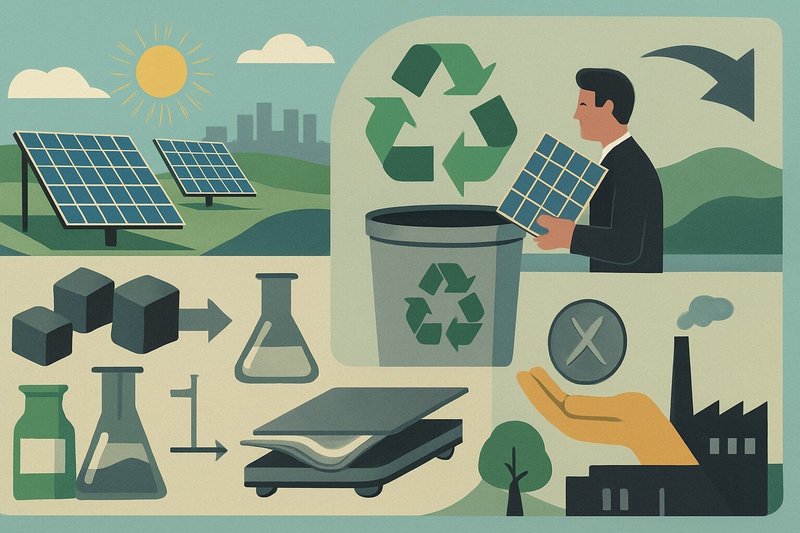Lithium Universe (ASX: LU7) will target silver metal in the first phase extraction of valuable elements from photovoltaic (PV) solar panels using the microwave joule heating technology.
The company is in the final stages of acquiring global rights to the technology through its purchase of private development company New Age Minerals.
Second phase extraction will see Lithium Universe investigate the presence of other valuable metals in discarded PV solar panels such as silicon, gallium and indium, which are considered to be critical inputs to the semiconductor industry.
Delamination Process
Developed by Macquarie University, the technology selectively heats silicon wafers to soften the ethylene vinyl acetate thermoplastic encapsulant in solar panels, facilitating easy delamination and enabling the potential recovery of valuable materials at room temperature.
This process eliminates the need for the extreme heat (up to 1,400°C) typically required to separate materials like glass and silicon, as well as the use of expensive and hazardous chemicals in traditional methods.
Delamination also allows for selective material separation without mechanical crushing, which often results in cross-contaminated materials and reduced recovery rates.
Silver is a primary ingredient in solar cells and is mixed with other materials to create a conductive paste that is applied to the surface and then baked onto the cells, forming silver contacts that help conduct the electricity generated by the solar panel, with the average panel containing around 20 grams (or 0.7 ounces) of silver.
Solar Panel Waste
The International Energy Agency projects that global waste from PV solar panels will reach up to 8 million tonnes by 2030 and between 60Mt and 78Mt by 2050.
By 2035, Australia is forecast to accumulate 1Mt of solar panel waste (where 50 panels equates to 1 tonne), valued at over $1 billion.
Currently, only 15% of used PV solar cells are recycled worldwide, with the rest ending up in landfill.
The poor recycling rate is due to the complex processes, high-temperature furnaces and toxic chemicals employed by conventional technologies.
Silver Demand on the Rise
Driven by the global expansion of solar panel installations and the focus on renewable energy and reduced carbon emissions, demand for silver in the solar industry is growing rapidly.
In recent years, PV panels have accounted for a significant share of total silver consumption and analysts are projecting the demand to reach a record 680 million ounces in 2025, fuelled by a 7% increase in industrial demand, which would result in a market deficit of around 117.6Moz.
This potential shortfall is already reflected in the commodity’s price, which has risen by 126% from US$15/oz in 2018 to US$34/oz in 2025.
Recovery through Recycling
Lithium Universe chair Iggy Tan said market dynamics underscored the increasing importance of silver recovery through recycling.
“As traditional mining struggles to meet demand, recycling will play an increasingly vital role in securing the supply of this critical metal,” he said.
“The continued expansion of industries reliant on silver, coupled with supply constraints, suggests that silver’s value is likely to remain high in the coming years.”
Lucrative Opportunity
Recycling and extracting silver from solar panels presents a lucrative business opportunity for the company.
“The growing volume of solar panel waste offers a readily available, cheap feedstock, and as demand from industries like electronics and renewable energy increases, recovering silver from end-of-life panels can become a valuable and sustainable revenue stream,” Mr Tan said.
“We believe that Macquarie University’s technology provides an efficient recycling option for silver, positioning us to capitalise on this growing market while addressing environmental challenges.”
Macquarie is also developing a complementary silver extraction method for delaminated silicon wafers from the microwave process and intends to make a licence available to Lithium Universe once a patent has been granted, at which point the company will evaluate the new technology.
